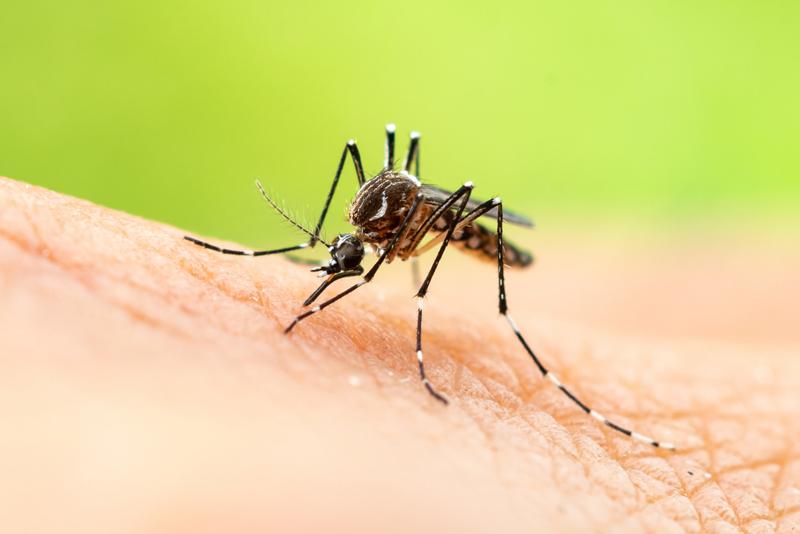Mosquitoes are more than a minor nuisance. These persistent insects can disrupt outdoor gatherings, cause itchy and uncomfortable bites, and in certain cases, spread diseases such as West Nile virus. In Arizona, their activity often peaks during the warmest months, with numbers rising sharply when rainfall or irrigation creates new breeding sites.
Keeping mosquitoes at bay requires more than just a quick spray before heading outside. The choice of repellent plays a major role in how effectively you can protect your yard from these pests. Each yard has different conditions, varying in size, landscaping, and exposure to standing water, that influence which solutions will be most effective.
By understanding how different repellents work, assessing your property’s unique needs, and pairing preventive measures with the right products, you can create an outdoor environment that is both more comfortable and safer for family and guests. In many cases, this means combining repellent strategies with targeted mosquito management that addresses the root causes of infestation.

Understanding How Mosquito Repellents Work
Before choosing a product, it’s helpful to understand how mosquito repellents protect your yard. Repellents function in different ways depending on their formulation:
- Chemical-based repellents: These contain active ingredients like DEET, picaridin, or permethrin, which create a chemical barrier that deters mosquitoes from approaching.
- Natural oil-based repellents: Derived from plants such as citronella, lemongrass, or eucalyptus, these can offer short-term deterrence but often require more frequent reapplication.
- Area treatments: These involve applying a repellent or insecticide to vegetation, shaded areas, and other mosquito resting spots to reduce local populations.
Effectiveness can vary depending on environmental conditions, application method, and mosquito species present. Targeting repellents to their resting and breeding zones is critical for success.
Factors to Consider Before Choosing a Mosquito Repellent
Not all yards or mosquito problems are the same. The right repellent depends on a combination of factors unique to your property:
- Size and layout of the yard: Larger areas may require different application techniques than small gardens or patios.
- Nearby water sources: Ponds, bird baths, or clogged gutters can provide breeding grounds that influence repellent choice.
- Shaded and vegetated areas: Mosquitoes rest in cool, damp spots during the day, so yard landscaping can affect treatment coverage.
- Climate patterns: Seasonal changes, such as Arizona’s monsoon rains, can increase mosquito numbers. Learn more about how rainy seasons influence pest populations in this guide on monsoon-related surges.
Evaluating these factors helps match the right repellent to your environment and ensures treatments are more effective.
Comparing Common Yard Mosquito Repellent Options
There is no one-size-fits-all solution, but understanding the most common types can help narrow your choices:
- Topical sprays and lotions: Applied directly to skin for personal protection. They are useful during outdoor activities, but do not reduce the yard population.
- Yard foggers and sprays: Provide immediate knockdown of mosquitoes in a defined area, though effects may only last a few days.
- Larvicides: Target mosquito larvae in standing water before they can mature, preventing population growth.
- Stationary repellent devices: These emit vapor or sound to deter mosquitoes, though effectiveness varies widely.
- Professional barrier treatments: Applied by trained technicians to vegetation and high-traffic mosquito zones, offering longer-lasting results.
A well-planned control program may use more than one method, particularly in regions with high mosquito activity.
Integrating Repellent Use with Broader Mosquito Management
Even the most effective repellents work best when paired with broader control strategies. These measures help address the root of the problem rather than just the symptoms:
- Remove standing water: Empty and clean containers that collect rainwater.
- Maintain vegetation: Trim shrubs and grass to reduce shaded mosquito resting areas.
- Improve drainage: Prevent water from pooling around the property.
- Time outdoor activities wisely: Mosquitoes are most active during early morning and evening hours.
- Combine with seasonal treatments: Coordinate repellent use with periods of peak mosquito activity for maximum effect.
For additional prevention tips tailored to local conditions, check out practical mosquito control strategies that work well in Arizona’s climate.
When to Consider Professional Mosquito Control Services
Repellents can help reduce immediate mosquito activity, but they may not solve the problem if breeding sites and resting areas remain untreated. Professional services have access to products and techniques that last longer, target hidden areas, and adapt to local conditions.
Technicians can identify and treat the most productive mosquito breeding zones, apply barrier sprays that withstand weather changes, and recommend long-term preventive measures. They can also integrate mosquito control with solutions for other common pests such as cockroaches, spiders, ants, and rodents, ensuring a more comprehensive protection plan.
Enjoy a Bite-Free Yard All Season Long
Don’t let mosquitoes limit your outdoor enjoyment. For customized solutions that protect your yard from these persistent pests, contact Panda Pest Control and take the first step toward a more comfortable, bite-free season.


